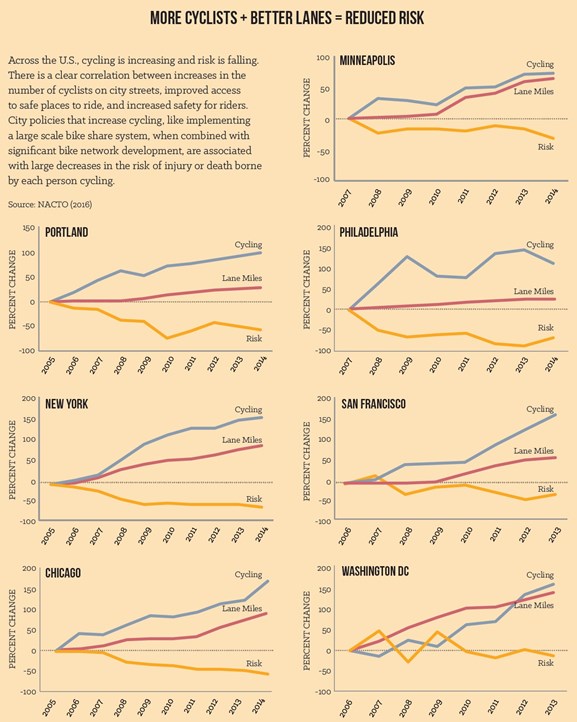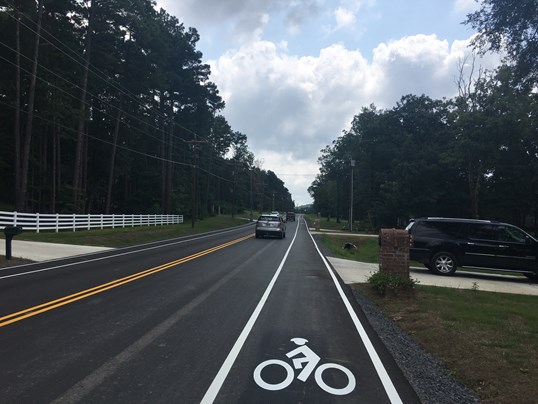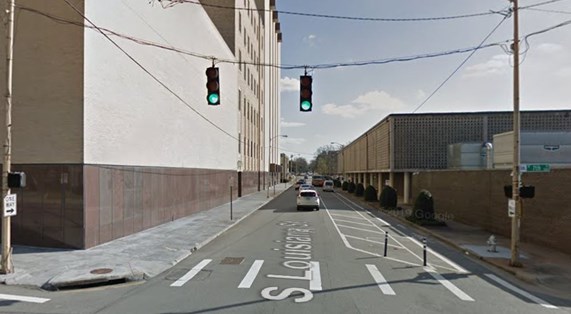Bike Lanes
Bike lanes are on-street bicycle facilities that offer a bicyclists a separated space from vehicular traffic and differing degrees of user comfort and protection. This page highlights some of our bike lane projects and discusses their importance. To see when these bike lanes were installed, see Project Timeline. To learn how bike lanes direct traffic movement, see CLR Bike Lanes 101 and CLR Bike Lanes 201 and, better yet, take a SMART Cycling class through BACA (for bicyclists) and a CLR Friendly Driver class (for motorists).
Why Install Bike Lanes?
Space on the roadway is valuable; do bike lanes provide measurable benefits?
Bike Lanes Increase Safety: This is intuitive, but we also have evidence to support it. In a study of 2,374 respondents, Relative Danger Index (RDI) 2nd highest on major streets without bike lanes and lowest on streets with bike lanes (incidentally, RDI was by far the highest on sidewalks, where it is generally considered unsafe for adults to ride). Other research supports this relationship as well.
Bike Lanes Increase Ridership: Nationally, in Arkansas, and in Little Rock, the largest disincentive to biking is a lack of facilities, including bike lanes, and the top four disincentives all relate to a fear of being struck by a motor vehicle (Fig. 1). Bicycle transportation options increase community health, sustainability, equity, and quality of life.
Ridership Increases Safety: This may not be as intuitive, but several studies show that increased ridership increases per capita safety. This virtuous cycle may have to do with drivers better accounting for bicycles as an expected traffic mode.

Figure 1. From data in several major U.S. cities, the relationship between ridership (cycling), (bike) lane miles, and (per capita) risk is clear (NACTO Equitable Bike Share).
Not all Bike Lanes Are Created Equal: Different types of bike lanes offer different degrees of separation from motor vehicles (see below); it should be no surprise that their impacts on safety and ridership differ accordingly (see also Latent Demand).
Types of Bike Lanes
Conventional Bike Lanes: Conventional bike lanes separate bikes from cars with a white line similar to the way vehicular lanes are separated from one another (Fig 2). They are a minimum of four feet wide but can be up to seven feet wide. Almost all bike lanes in Little Rock are conventional bike lanes, typically five feet wide. See also NACTO.

Figure 2. Conventional bike lanes on Pinnacle Valley Road.
Conventional bike lanes in Little Rock can be found on:
- Pinnacle Valley Road
- Taylor Loop Road
- Lamarche Drive
- North Rodney Parham
- Asher
- Van Buren
- 33rd Street (25 mph)
- Arch Street (35 mph)
- 17th/Wright/Asher (30 mph)
- Mabelvale Pike (40 mph)
- Fair Park (30 mph)
- Riverfront Drive (35 mph)
- Rebsamen Park Road (35 mph)
- Chenal Valley Drive (35 mph)
- Stagecoach Road (45 mph)
See also LR Bike Ways for an interactive map of these facilities.
Buffered Bike Lanes: Buffered bike lanes are conventional bike lanes with a striped buffer between the bike lane and the vehicular bike lane. This buffer tends to increase the distance between passing vehicles and bicycles, lowering stress and encouraging greater ridership, but requires more street width to install vs. a conventional bike lane. We do not have any buffered bike lanes in Little Rock. See also NACTO.
Protected Bike Lanes: Protected bike lanes, also known as "separated bike lanes" or "cycle tracks" offer a physical barrier between vehicular traffic and the bike lane (Fig. 3). There are many types of protected bike lanes, each with advantages and challenges. Protected bike lanes offer greater separation than even buffered bike lanes, further lowering stress and encouraging ridership. We have one protected bike lane in Little Rock on Louisiana Street (Fig. 4).
Figure 3. People for Bikes discusses how protected bike lanes can lower rider stress, getting more people and a wider variety of people to ride more often.

Figure 4. Little Rock has a protected bike lane on Louisiana Street.
For more information about Little Rock's bicycle and pedestrian infrastructure, go to Projects.




 Trash & Recycling
Trash & Recycling
 Online Payments
Online Payments
 City Documents
City Documents
 Parks
Parks
 Traffic Court
Traffic Court
 E-NEWS
E-NEWS
 EXPLORE
EXPLORE
 NEWS
NEWS
 TRANSLATE
TRANSLATE
